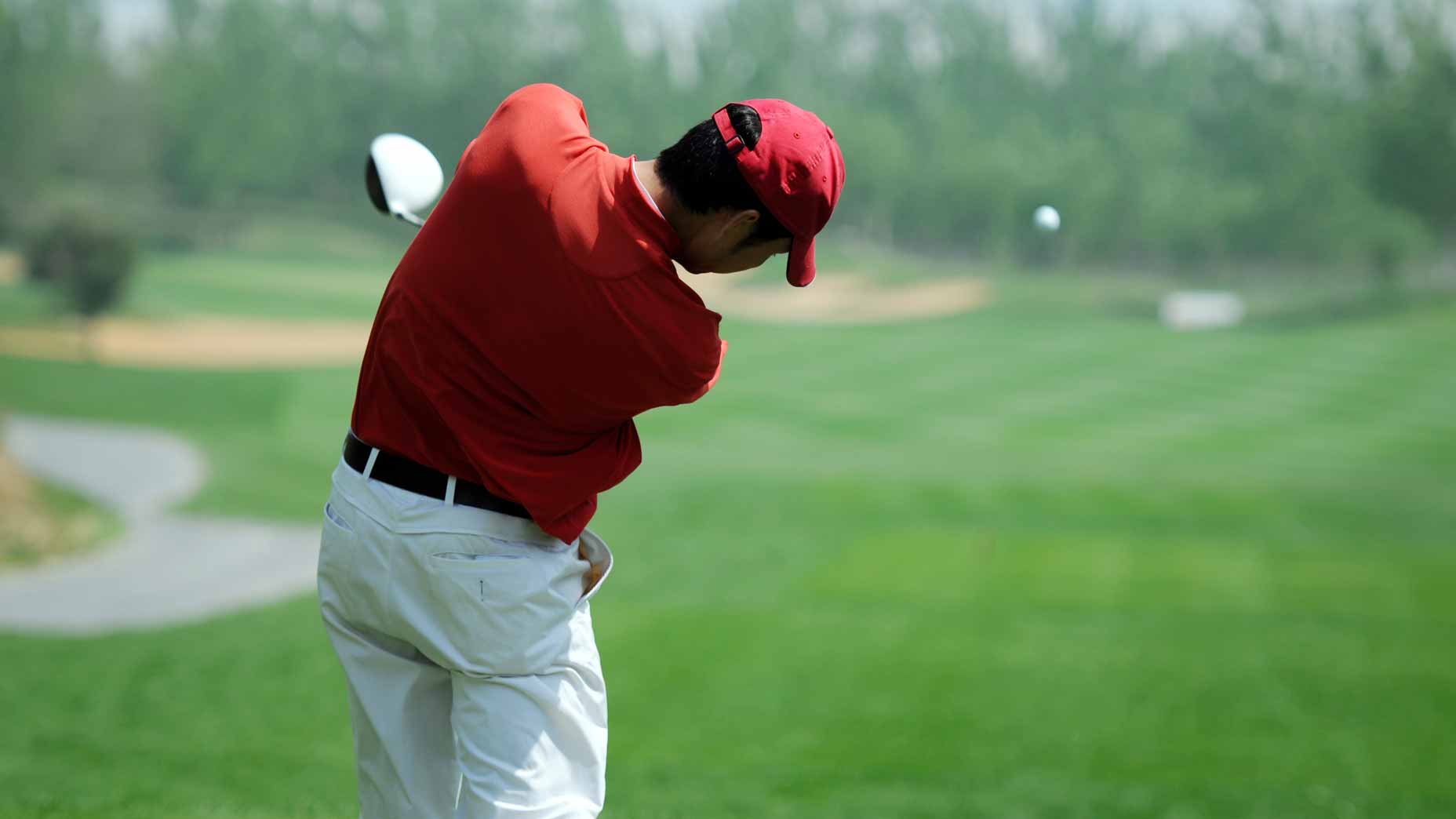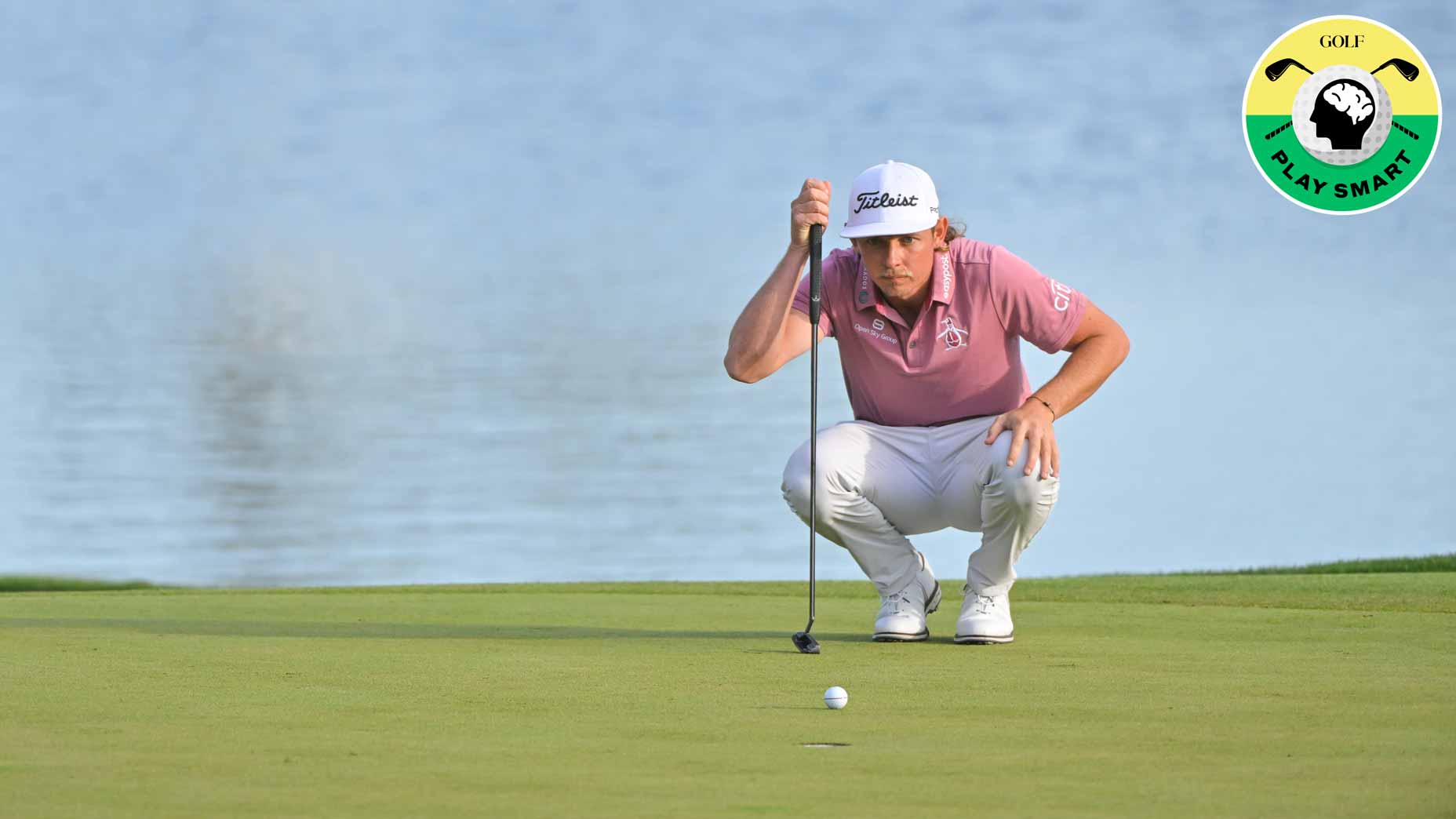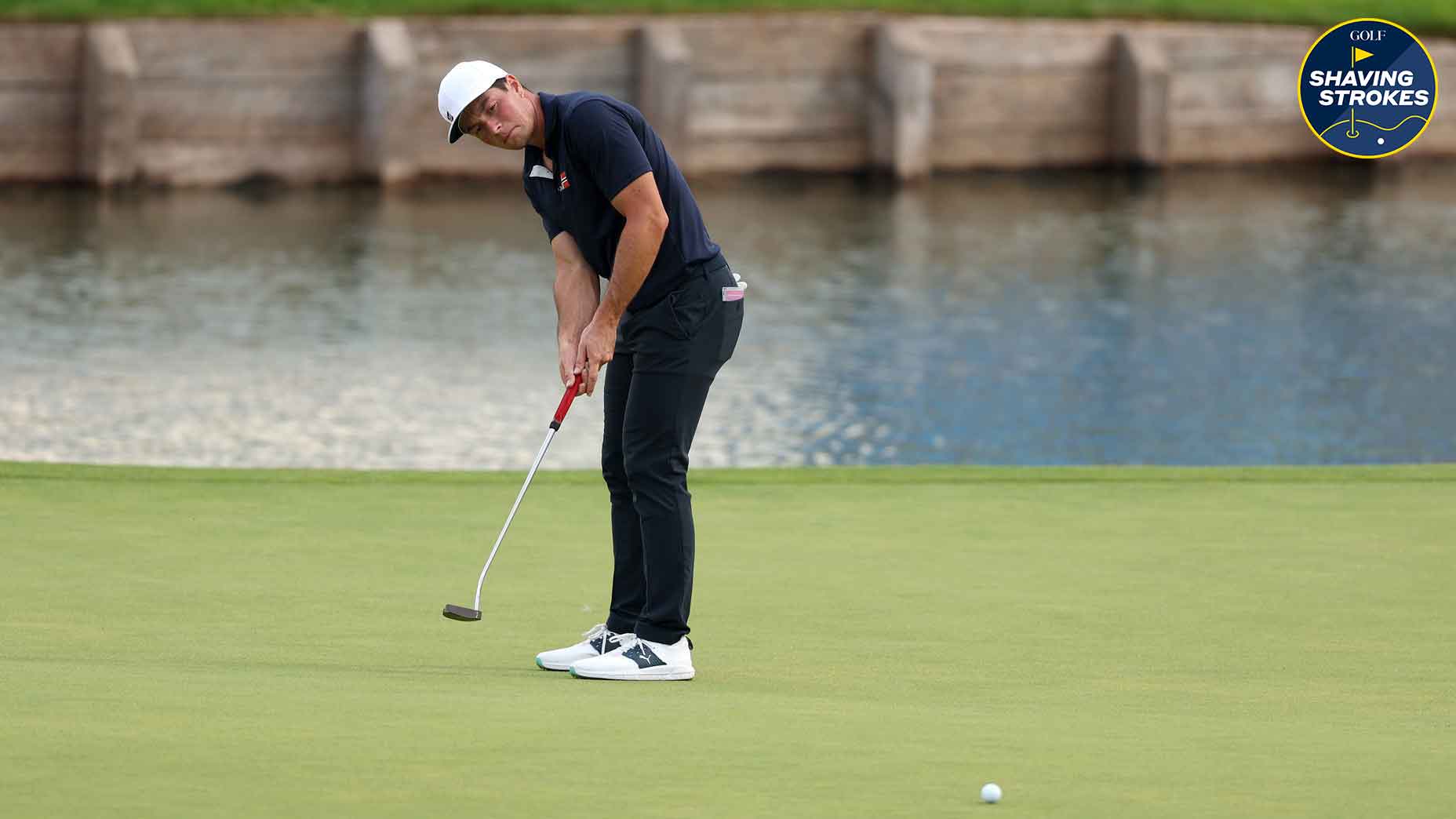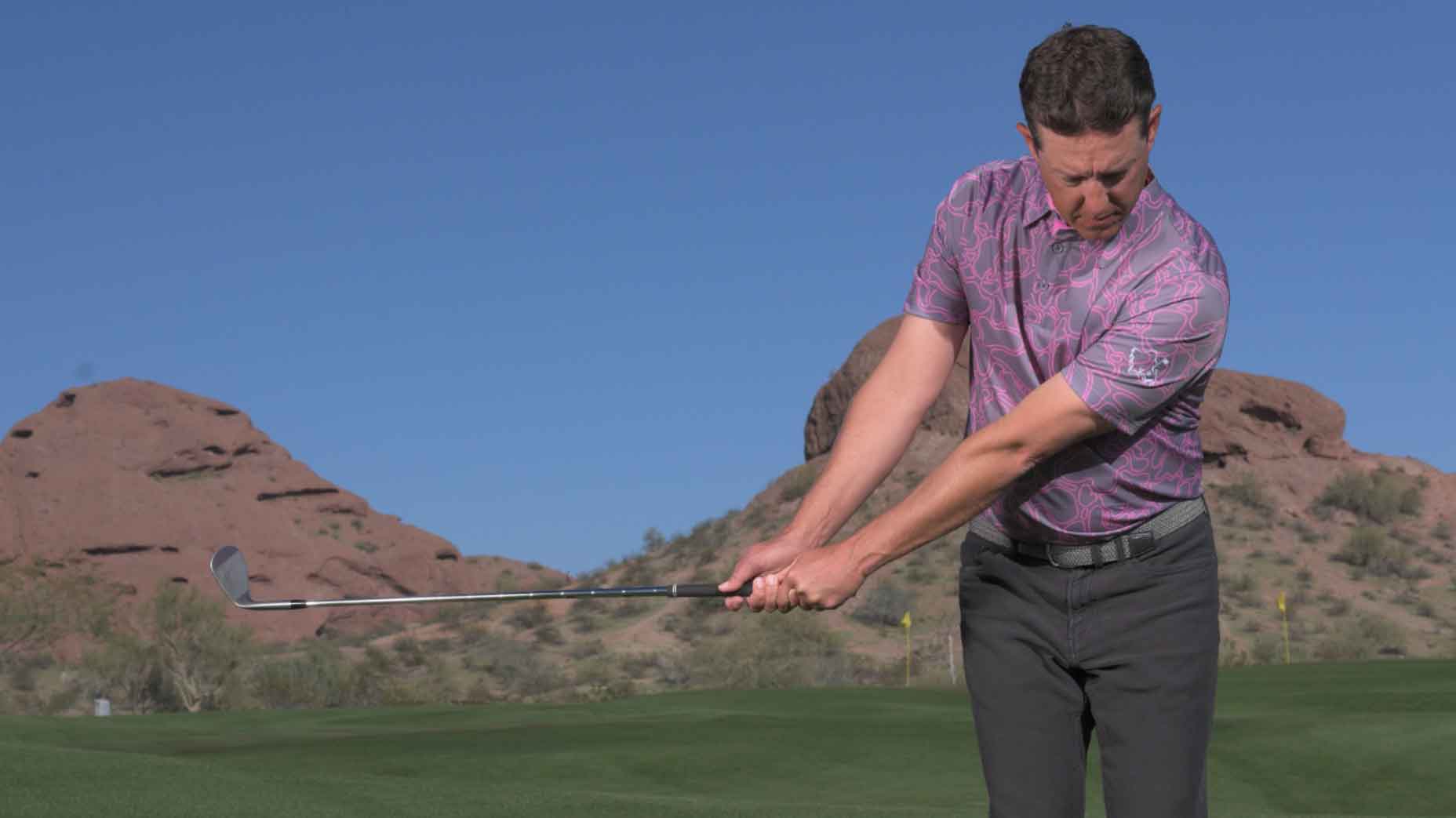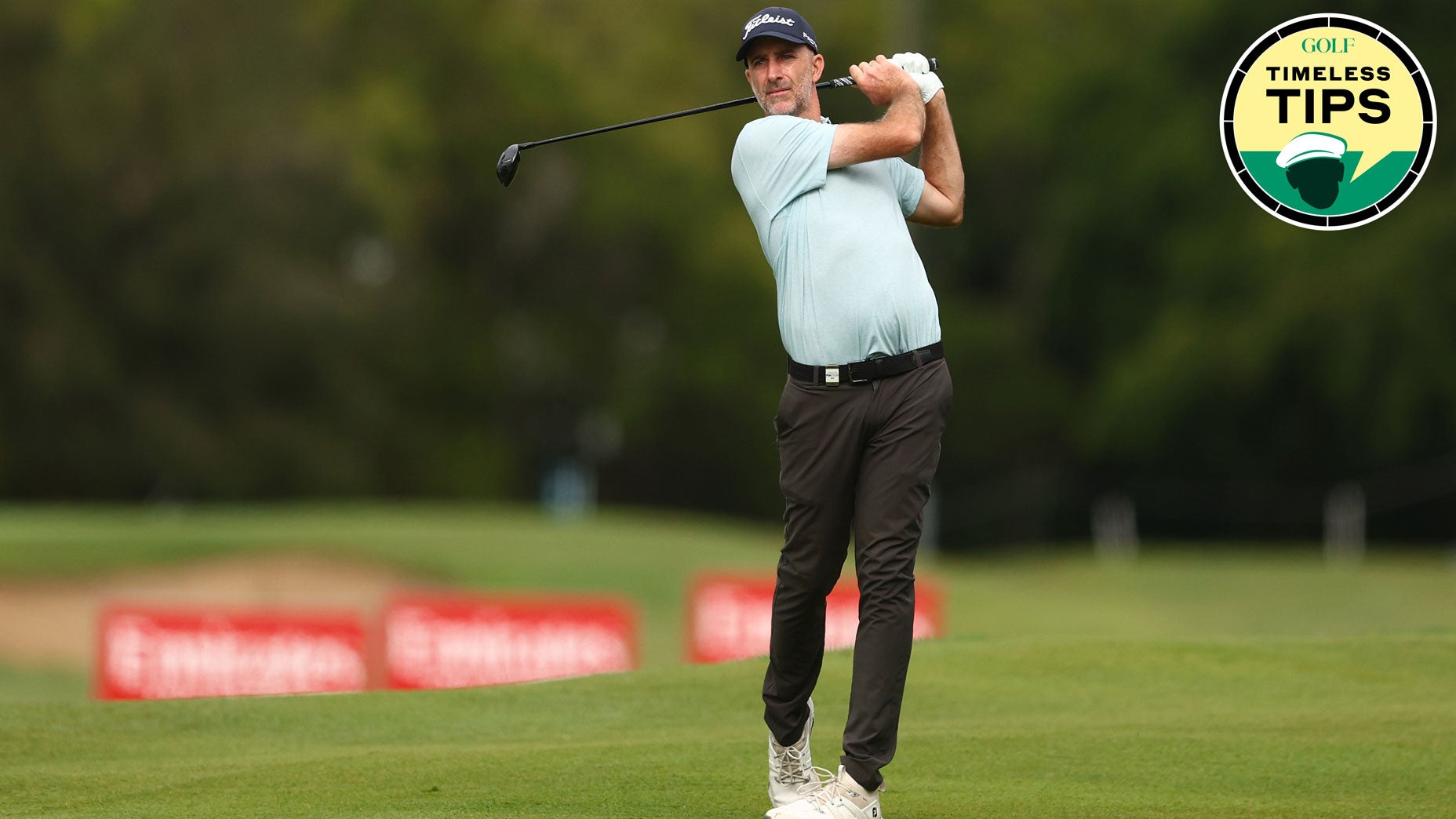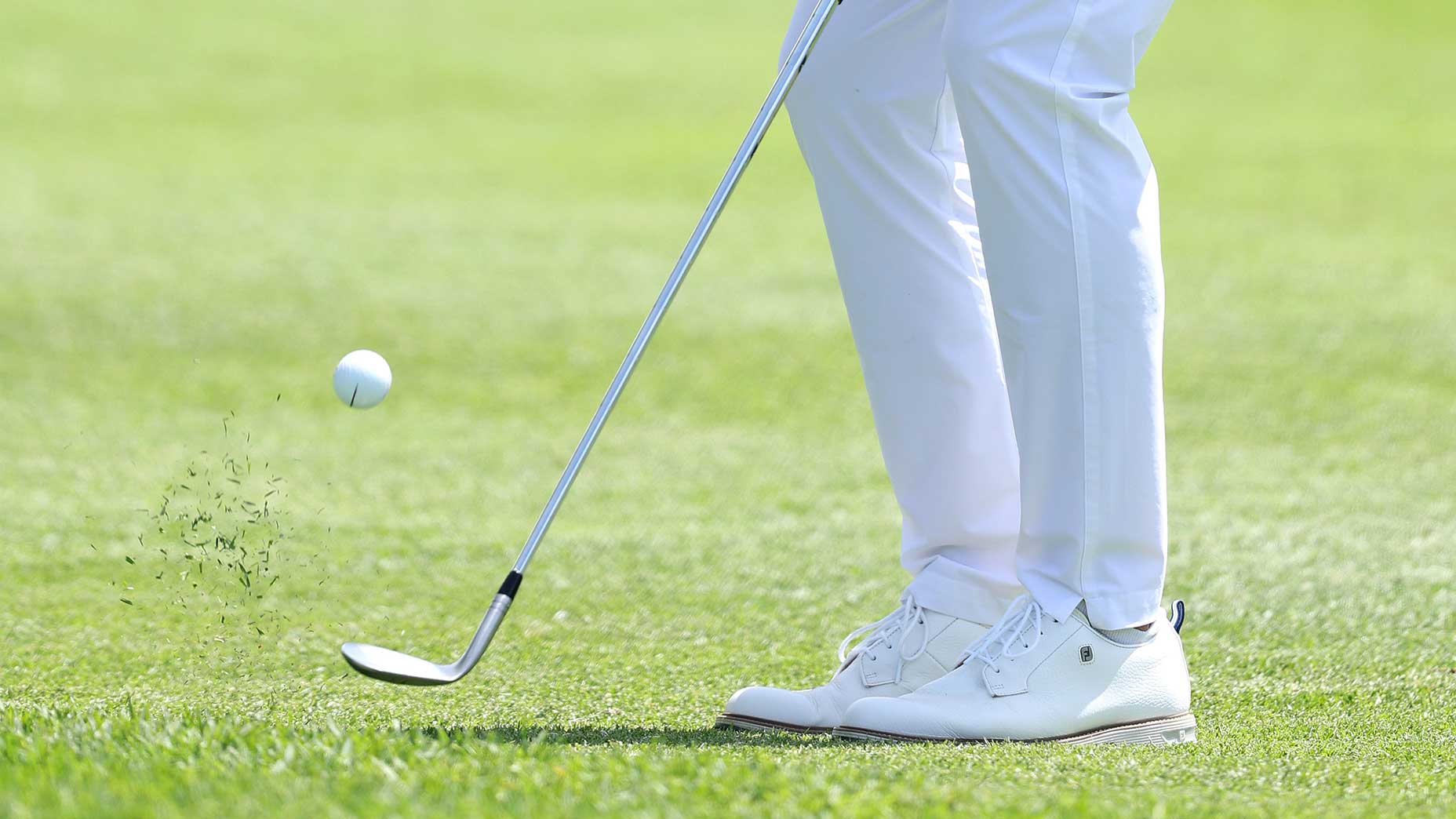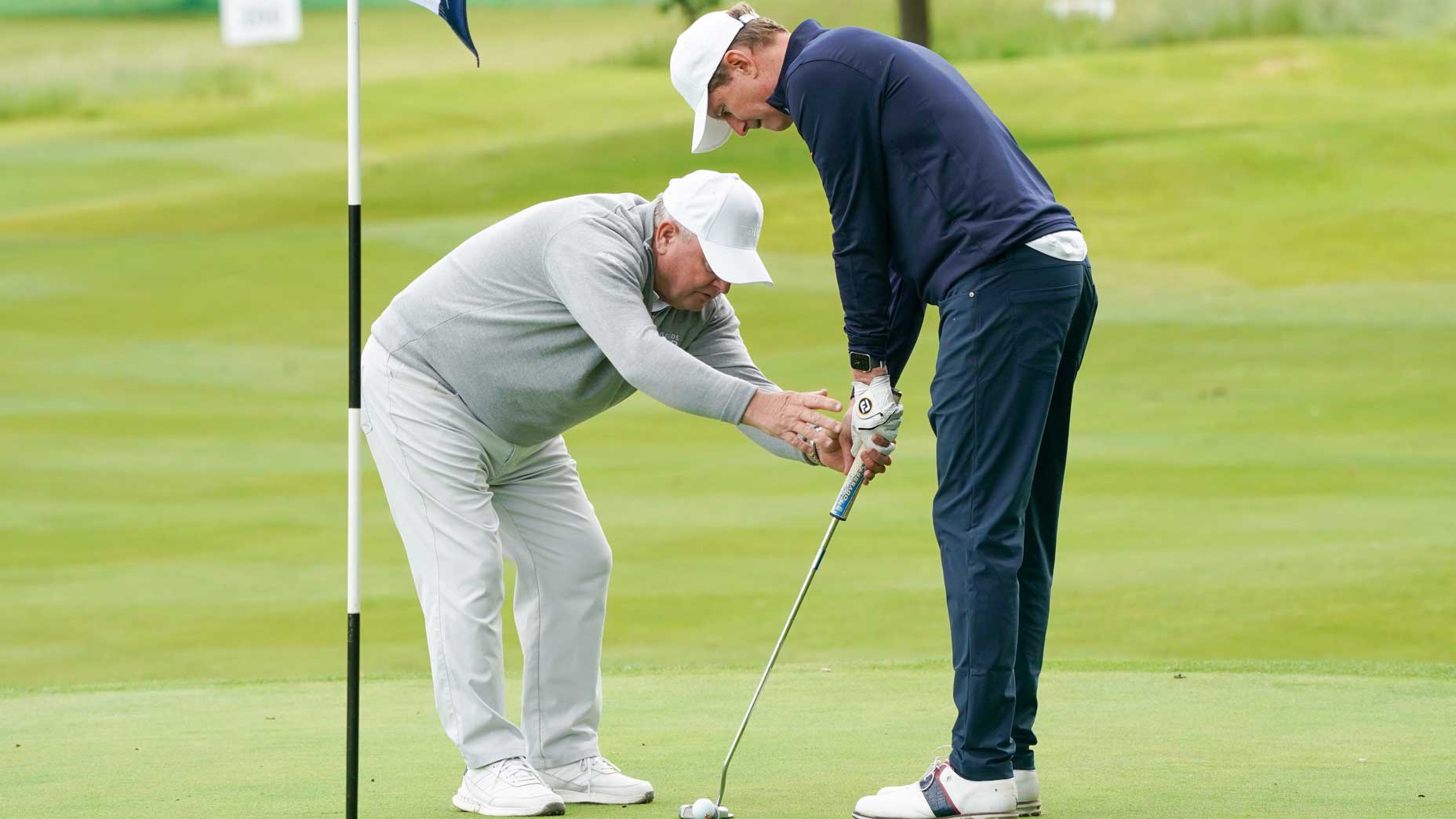Jack Nicklaus reveals the secrets to fearless putting
- Share on Facebook
- Share on Twitter
- Share by Email
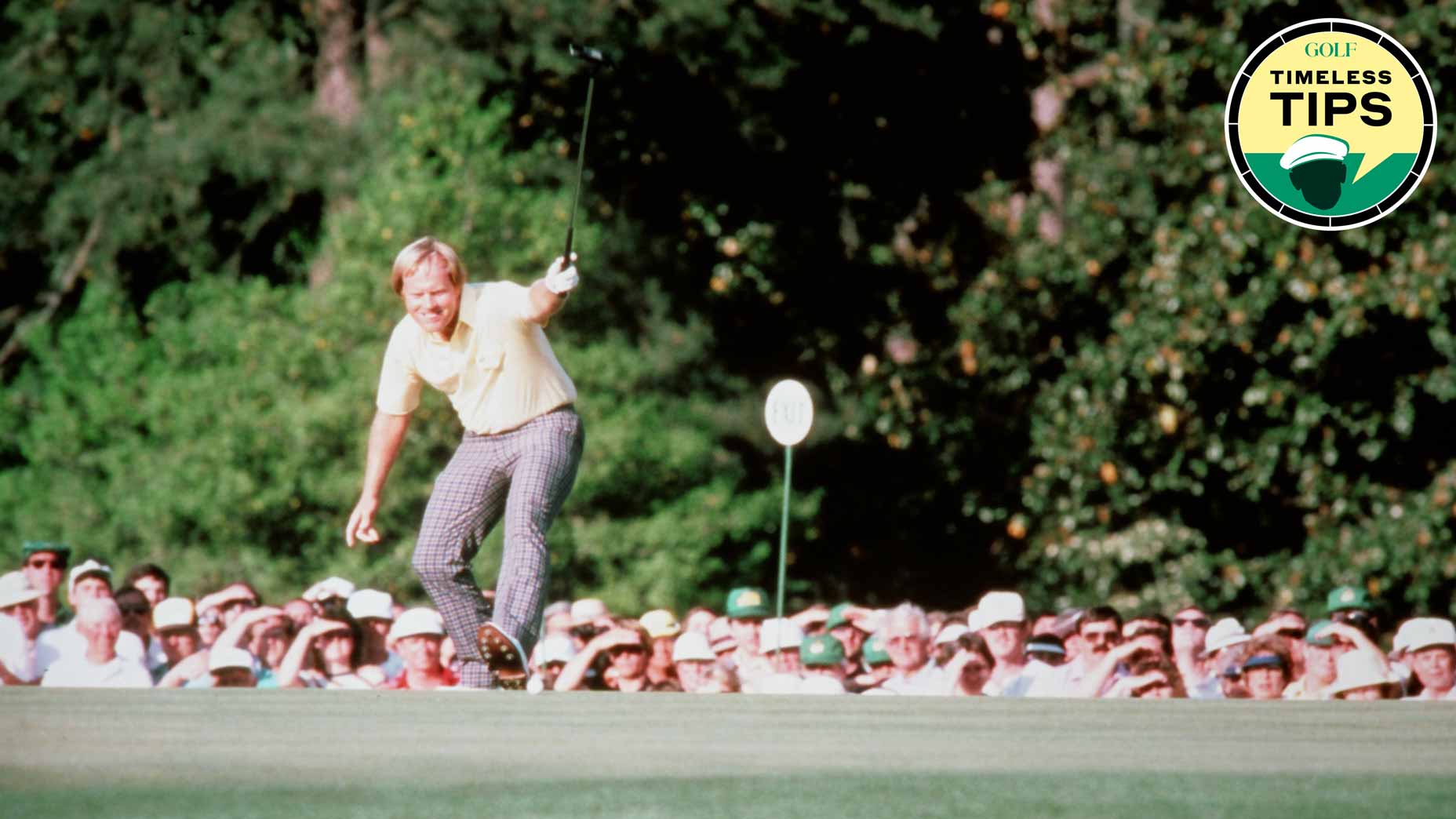
If you want to become a fearless putter on the greens, listen to this advice from 18-time major winner Jack Nicklaus.
Getty Images
Golf instruction is ever-evolving, but the best advice stands the test of time. In Timeless Tips, we highlight some of the greatest advice teachers and players have dispensed in the pages of GOLF Magazine. Today we have some putting tips from Jack Nicklaus from our September 1994 issue. For unlimited access to the full GOLF Magazine digital archive, join InsideGOLF today; you’ll enjoy $140 of value for only $39.99/year.
Good golf requires great mental discipline, and no element of the sport requires more mental fortitude than putting. When you’ve got confidence on the greens, the cup begins to look like a basketball hoop. But when you’re struggling, it can feel like trying to putt into a thimble.
Just about every tournament victory ends on the greens. Whether it’s a 15-footer to clip your opponent by one, or a two-putt to close out a dominant victory, it all ends on the greens.
That in mind, it’s crucial that you can handle your nerves with your wand in hand. If you’ve got sweaty palms and shaky hands standing over the ball, it’s tough to sink a putt. To be a great putter, you must be fearless.
There may be no more undaunted putter in the history of the game than Jack Nicklaus. Over the course of his legendary career, the Golden Bear won 18 major titles — and much of that success can be attributed to excellent pressure putting.
In 1994, Nicklaus joined GOLF Magazine to share some tips on becoming a fearless putter. You can check them out below.
Jack Nicklaus’ tips for fearless putting
The common wisdom is that putting ability declines with age. The analysts point to great champions whose green skills deteriorated late in their careers. Some of the great champions themselves have blamed inferior putting for making them less competitive as they grew older.
Well, it hasn’t happened to me so far. And I don’t see any reason why it ever should, as long as my competitive fires keep burning fiercely.
Granted, I haven’t putted these past few years quite as well as I did at my peak, but that had nothing to do with “nerves,” or vision problems, or declining mechanical skills, or any of the usual excuses for age-related inferior green work.
The only reason I putted a little less well than I used to was the extra pressure I subjected myself to as a result of hitting fewer greens in regulation and not getting the ball as close to the hole as in my best years. Whereas once I knew I only had to make a certain percentage of putts to win, during the long, lean spell I increasingly felt I needed to make everything I looked at to have any chance. However, had my tee-to-green skills matched those of my peak years, I’m certain my putting would have been equally good.
It’s in your head
If you think the above statement is further proof of the old adage that putting is all in the mind, you’re dead right. Believe you can knock them in the hole and you’ll knock ’em in. Believe you can’t and you won’t.
When I started on the Tour in 1962, there were a lot of what you might call “real men” out there who had come up the hard way and who, deep down, seemed to look upon putting as sort of a sissified part of the game. It was macho to be a great “shotmaker”-to crush out big drives, drill long-irons tight to the hole, draw and fade the ball at will-but a little wimpish to make low scores mostly with the short stick. Many of those players’ putting skills declined severely as they aged. I believe their attitude had a big bearing on that.
To become and remain a good putter, you have to accept putting’s huge role in golf, you have to like putting, and you have to want to do it very well.
A couple of statistics might help you with all of those challenges. The last time I checked, 43 percent of the strokes expended on the PGA Tour were putts. “Par” for players making a good living out there was under 30 putts per round.
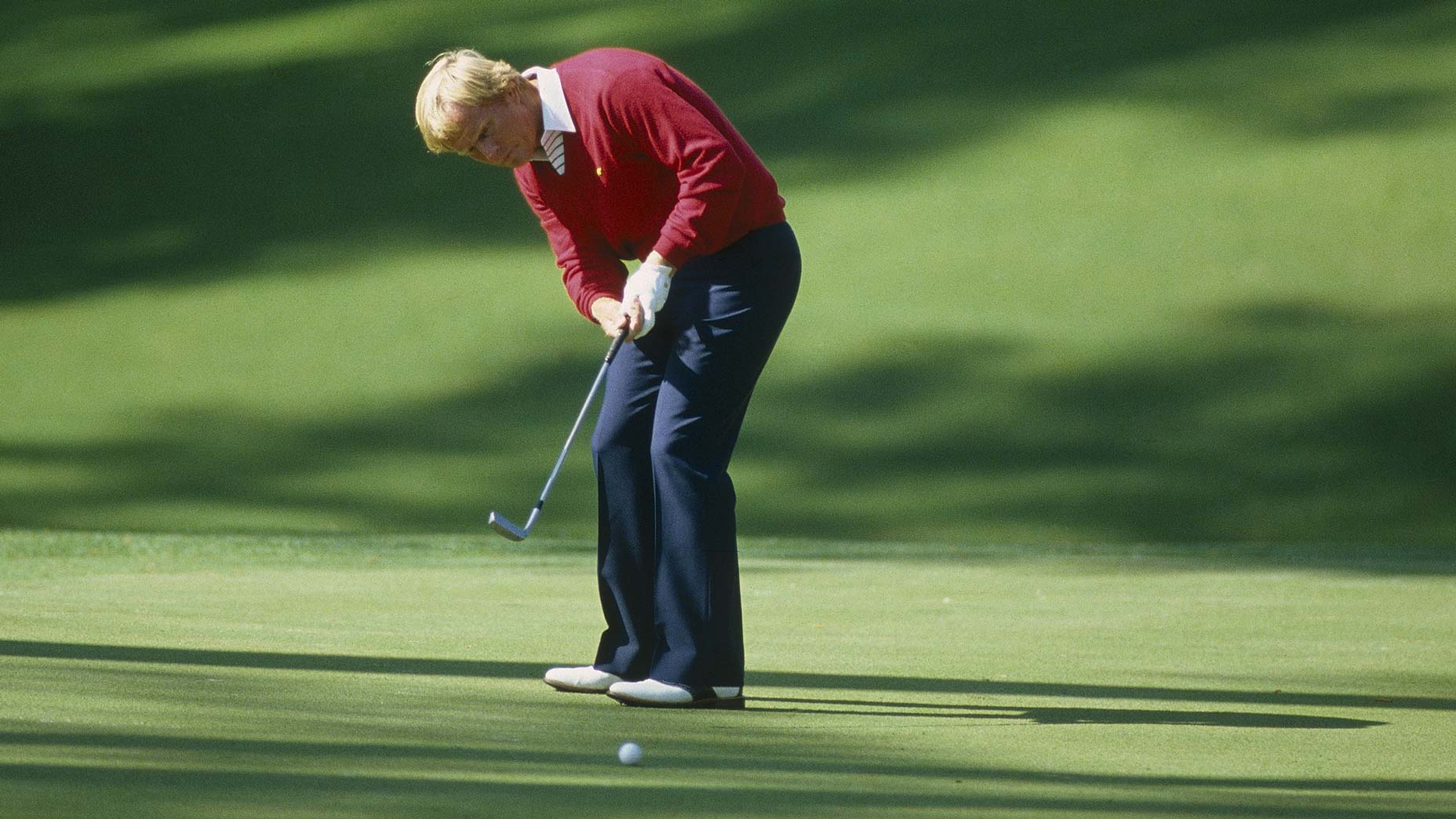
The fear factor
“Boy,” you’ll hear on any golf tour in the world, “that guy is an unbelievable putter! He’s absolutely the best out here!”
Being a get-along person, I just smile to myself at such comments, but what I really want is to ask, “What’s he won?”
There are many great strokers of the ball in tournament golf. But players who can get the ball into the hole time after time after time when it matters the most — when you’re either going to win or lose right now — are a much rarer species.
They, of course, are the top winners.
Last year’s Masters champion Bernhard Langer is perhaps the best current example of the dif-ference between a “wonderful putter” in the technical sense and a player with great ability to get the ball in the hole when it matters. At least twice, Bernhard has suffered from the yips about as badly as a golfer can, resulting in an ungainly-looking technique worked out by and unique unto himself. But, year after year, he’s also one of the winningest golfers in the world.
What’s at play here, of course, is the fear factor.
Because putting is the most precision-oriented, most delicate, and most decisive act in golf, fear of losing— or, even more commonly, fear of winning — grabs tightest and most destructively on the greens.
Jack Nicklaus had a ‘mystery’ power move. Here’s how it workedBy: Zephyr Melton
Thus the best putters aren’t, as so many people seem to suppose, the finest technicians or the smoothest strokers. The best putters are the golfers who, over and over and over, make the putts they absolutely have to make in order to win the game’s top tournaments — Bob Jones, Walter Hagen, Gene Sarazen, Ben Hogan, Sam Snead, Byron Nelson, Arnold Palmer, Gary Player, Lee Trevino, Tom Watson, Ray Floyd, Seve Ballesteros, and Nick Faldo.
Did they all have wonderful putting techniques? No, sir. Did they all have strong, steady stomachs, steady nerves and great hearts? You bet! And that’s what made them great putters.
Learn from your mistakes
Are those qualities of courage and resolve innate gifts, or can they be acquired? Although some will do better than others, I believe anyone can build up his inner resources by learning from his mistakes.
One of the best examples of a golfer doing that is Tom Watson. When he was very young, Tom had the chance to win a number of major championships but lost them all down the stretch. He was accused of choking, but what he lacked was experience and self-insight, not guts.
Many people in Tom’s situation would have accepted second-best and gone on performing at that level. Watson was made of sterner stuff. Each time he failed he thought hard about why, then tried the next time he got into a winning position to feed off what he had learned about himself and his game. Most of the mistakes were in the management of his tee-to-green play, but some, like over-aggression or under-aggression under pressure, were in his putting. When he’d finally put all the pieces of the puzzle together, his confidence had grown to a point where, especially on the greens, he believed he couldn’t fail. And, of course, he then became the best player in the world for a decade or more.
The chief reaction among amateurs to poor putting, it seems to me, is exasperation, combined with a sort of vague hope that, by some kind of mini-miracle, it will all have gotten better by the next time they play. Without analyzing and learning from their mistakes, I doubt that it ever will.
Are those qualities of courage and resolve innate gifts, or can they be acquired? Although some will do better than others, I believe anyone can build up his inner resources by learning from his mistakes.
One of the best examples of a golfer doing that is Tom Watson. When he was very young, Tom had the chance to win a number of major championships but lost them all down the stretch. He was accused of choking, but what he lacked was experience and self-insight, not guts.
Many people in Tom’s situation would have accepted second-best and gone on performing at that level. Watson was made of sterner stuff. Each time he failed he thought hard about why, then tried the next time he got into a winning position to feed off what he had learned about himself and his game. Most of the mistakes were in the management of his tee-to-green play, but some, like over-aggression or under-aggression under pressure, were in his putting. When he’d finally put all the pieces of the puzzle together, his confidence had grown to a point where, especially on the greens, he believed he couldn’t fail. And, of course, he then became the best player in the world for a decade or more.
The chief reaction among amateurs to poor putting, it seems to me, is exasperation, combined with a sort of vague hope that, by some kind of mini-miracle, it will all have gotten better by the next time they play. Without analyzing and learning from their mistakes, I doubt that it ever will.
Because the advice about the basic techniques of putting is sp readily available from so many sources, my focus here will be on what long experience has taught me are the most crucial factors in accurately rolling a golf ball across a green.
Grip
So long as they allow you to swing the face of the putter squarely through the ball traveling directly along your intended target line at impact, the mechanics of your putting grip are immaterial. Experiment until you achieve comfort, repeatability, and effectiveness. When you do, even if your grip looks “funny” to others, stick with it. Silence any nay-sayers by mentioning Langer.
More important than the configuration of your hands on the putter is the pressure in them. Whether you hold the putter tightly, loosely, or somewhere in between is of much less consequence than equalizing the pressure in each hand, then sustaining the same amount of pressure throughout the stroke.
Jack Nicklaus’ favorite thing about golf? His answer will warm your heartBy: Jessica Marksbury
Change your grip pressure and most likely you involuntarily change both the pace and the path of the putter head. Grip tight at address then ease up during the stroke and you’ll tend to over-accelerate the putterhead and pull the ball left. Hold loosely at address then tighten during the stroke and you’ll tend to decelerate and shove the putterhead and the ball to the right. Even if you avoid major errors of speed and line, you will be less consistent than you’d like on the greens.
Achieving equal grip pressure in both hands at address, then sustaining it throughout the stroke, has been a putting key of mine for many years. If you’re not already using it, I think it could have a beneficial effect on your green work.
Setup
As with grip mechanics, I think how you arrange your- self at address for putting is, with a couple of exceptions, pretty inconsequential, so long as it promotes swinging the face of the putter squarely through the ball and direct- ly along your intended target line at impact. Being comfortable and stress-free, or well balanced, over the ball will help you achieve that. The exceptions concern your eye-line at address.
Most good putters over the years have set up with their eyes either directly over the ball, which also posi- tions them over the intended starting line of the putt, or, as in my case, behind the ball but still over the target line. The reason for this is, when the eyes are positioned to the inside of the target line, there’s a tendency to stroke excessively from in-to-out and push the ball; and, conversely, to stroke from out-to-in and pull putts when the eyes are positioned beyond the target line.
Your other equally important optical goal should be to set your eyes parallel to the putt’s starting line, rather than angled to its right or left through an inclination or canting of the head at address. Even though you’ll hear or read less about this factor than the previous one, in my experience it can have an equal bearing on how you stroke the ball. Align your eyes right of the target line and you’ll tend to stroke too much from inside to out and push putts. Align your eyes left of the target line and you’ll risk doing the opposite-pull putts by swinging the putter head from out to in.
I recommend that, as I do, you constantly check both of these important optical elements in practice. And you should certainly look to them first whenever, for no obvious reason, you begin missing more than your share of putts.
Stroke
Over the years I’ve tried every kind of putting stroke known to man, but have always gone back to the technique that felt the most natural to me, and with which I was most successful from my earliest golf days. If I’m right in believing that most other top players have followed the same pattern, then the lesson is clear: Find out through trial and error what works best for you as a unique individual, then stay with it.
There are basically three ways to stroke a golf ball with a putter. One is with a swinging of the arms, hands, and putter as a single unit motivated by a back-and-through rocking motion of the shoulders while everything else stays relatively still. Another is with hinging and unhinging of the wrists, while as in the shoulder stroke, the rest of the body stays comparatively still. The third, which always in the end has worked best for me, involves a combination of the other two techniques.
I can describe my stroking action fairly simply. A slight targetward motion or forward-pressing of my hands serves as a “trigger” for backward swinging of my arms, combined with some hinging or cocking of my wrists, the amount in each case depending on the length of the putt.
A slight forward-press of my hands serves as a “trigger” for my backswing, combined with some hinging to cocking of my wrists, the amount in each case depending on the length of the putt.
On shorter putts, from the end of the backswing I simply pull the butterhead through the ball with my hands and forearms with very little or no release of my wrists.
On longer putts, the distinct hitting motion of my right hand causes my left wrist to “break” or hinge targetward a little bit after impact. I believe this breaking of the left wrist through or after impact to be less than ideal theo- retically, but have gone along with it because fighting it does more harm than good to my sense of “touch.”
Why do I keep coming back to this method? I’ve always believed that golfers putt best when they are able to “feel the ball to the hole.” Although it can badly frustrate me at times, the action I’ve described lets me do that more often and better than any of the others I’ve tried.
You need to find the type of stroke that does the same for you.
Latest In Instruction

Zephyr Melton
Golf.com Editor
Zephyr Melton is an assistant editor for GOLF.com where he spends his days blogging, producing and editing. Prior to joining the team at GOLF, he attended the University of Texas followed by stops with the Texas Golf Association, Team USA, the Green Bay Packers and the PGA Tour. He assists on all things instruction and covers amateur and women’s golf. He can be reached at zephyr_melton@golf.com.



